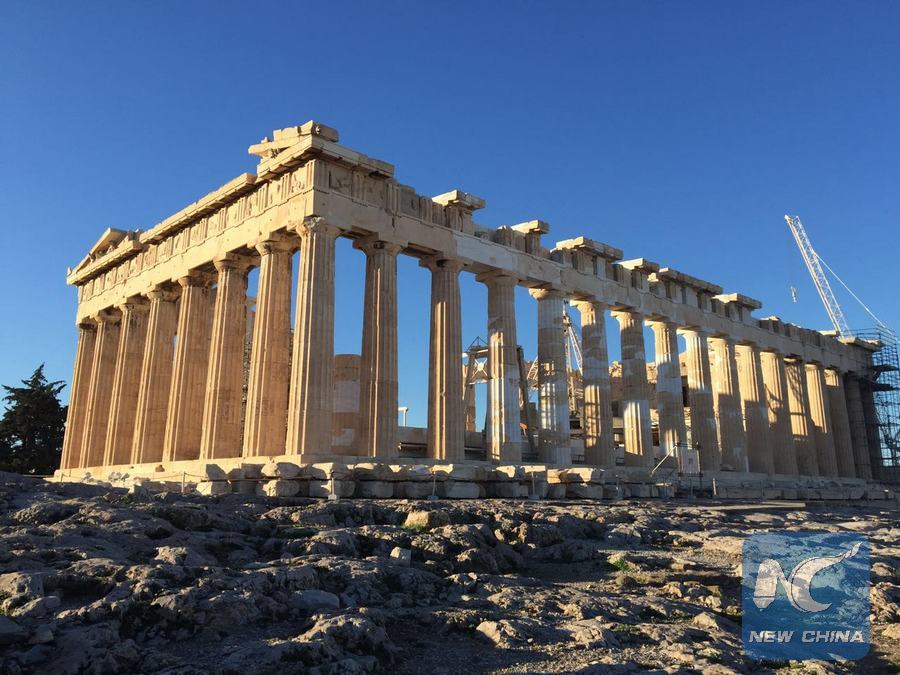
This photo taken on Nov. 10, 2016 shows the Athenian Acropolis in the historic center of Athens, Greece. (Xinhua/Tian Ye)
by Maria Spiliopoulou
ATHENS, Nov. 10 (Xinhua) -- For over two millennia, the rocky hill of Acropolis in the center of Athens, crowned with a unique ensemble of masterpieces of Greek Classical architecture, is a timeless universal symbol of the glorious legacy of the ancient Greek civilization and the great ideals born in this land.
In recognition of its outstanding artistic and historic value in 1987 the Athenian Acropolis, the finest example of the splendor of Greek civilization at its peak, was inscribed as a designated UNESCO World Heritage site.
In 2006 UNESCO further acknowledged the Sacred Rock and its monuments as a "symbol of the idea of world heritage."
At the birthplace of democracy in the 5th century BC, as philosophy and arts thrived, statesman Pericles endorsed an ambitious plan to reconstruct the sanctuary of Athens' patron goddess, Athena, which was destroyed during the war with the Persians.
The brightest minds of the time joined forces under the guidance of sculptor Pheidias to transform the Acropolis hill under an inspired concept into a unique complex of monuments which from antiquity to the present represents a priceless world cultural heritage treasure.
Construction of the massive Parthenon temple dedicated to Athena Parthenos (Athena the Virgin) at the centre of the 156 meter high hill, designed by Ictinus and Kallikrates, began in 447 BC.
Propylaea, the impressive gateway to the site by Mnesicles, followed. By 406 BC the smaller temple of Athena Nike (Victory) and Erechtheion with its renowned Caryatids, the female figures on one of its porches, were also erected.
Built entirely of Pentelic white marble, the definitive monument of world civilization caused gasps of admiration at the time and in subsequent centuries influenced other monuments of the Western civilization which followed.
In the course of time the monuments of the Athenian Acropolis suffered damage from natural causes and the human factor.
In the 6th century AD the monuments were converted into Christian churches, while in the Ottoman period (1456-1833) into a mosque, garrison headquarters and munitions store.
In 1687 during the siege by the Venetians the Parthenon was hit by artillery fire. In 1801 the British Lord Elgin looted the sculptures decorating the Parthenon, the Erechtheion and the Athena Nike temple.
During the Greek War of Independence in the early 19th century the Acropolis returned to the hands of the descendants of the ancient Greek architects of the Classical miracle of the Pericles' Golden Age. The features dated from the Byzantine to Ottoman periods were removed to restore the monuments to its original form.
Despite the damage inflicted the masterpieces of the Athenian Acropolis are still a striking aesthetic paradigm which embodies the achievements and ideals of Classical Greece.
However, the issue of the removal of the sculptures by Lord Elgin casts a dark shadow over the Sacred Rock. Their repatriation to be out on display in the new Acropolis Museum is still an issue awaiting to be settled.

